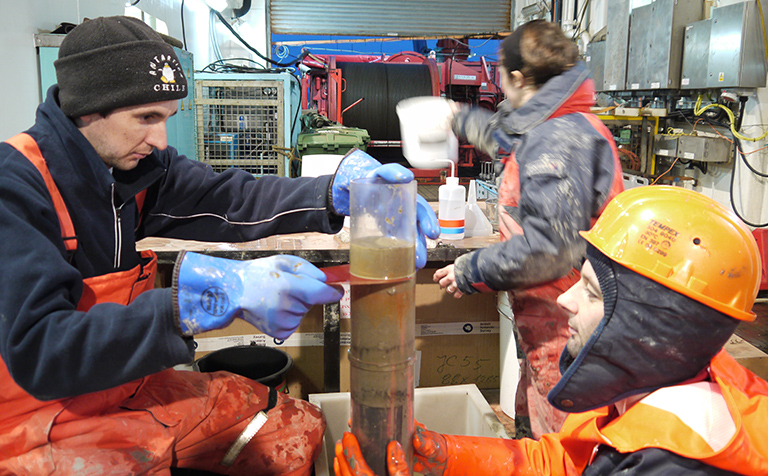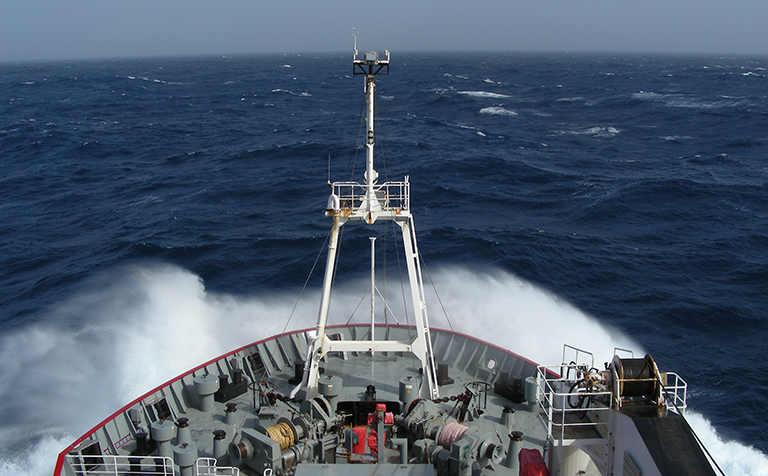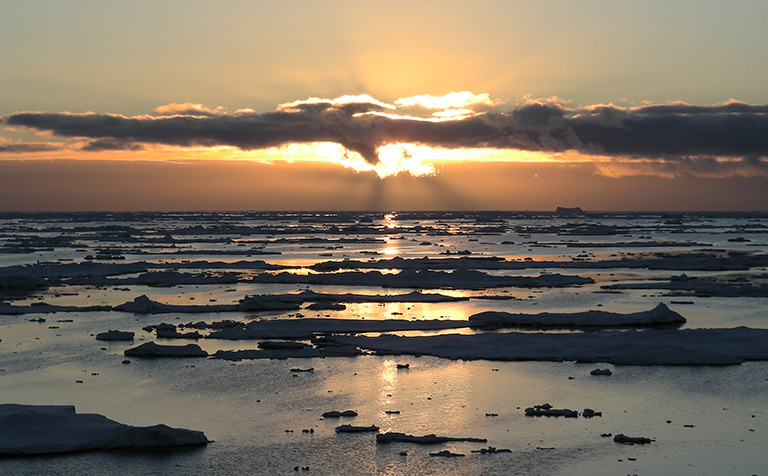
The view of North Cove from Antarctica's Rothera Research Station. Credit: Adrian Glover.
Principal Investigator
Project summary
- Focus: Documenting and monitoring biodiversity deep in the Antarctic Southern Ocean during a period of rapid environmental change
- Funding: National Environment Research Council
We are examining biodiversity deep in the Antarctic Southern Ocean to understand how marine ecosystems may deal with future climate change.
This work uses DNA and morphology data from samples collected by the British Antarctic Survey BIOPEARL project from the West Antarctic.
High-latitude ecosystems, such as the Antarctic, experience extreme variation in productivity and food supply between seasons and years. By examining how marine ecosystems respond to these changes, we can test how they may respond to global change.
When our work is finished, it will be one of the largest benthic diversity datasets ever published for the region.
-

Researchers sample deep-sea sediment cores to assess biodiversity. Credit: Adrian Glover.
-

The RRS James Clark Ross in the Southern Ocean. Credit: Adrian Glover.
-

Antarctic ecosystems experience extreme variation in productivity and food supply between seasons. Credit: Adrian Glover.
We are also combining this information with detailed taxonomic study to discover new species of polychaete worms.
Research Assistant Lenka Neal has already identified over 300 different species from the BIOPEARL collection of over 15,000 polychaete specimens. We are now analysing the genetic data and stable-isotope ratios of these worms to see how they disperse around Antarctica, and to look for evidence of cryptic speciation.
Adrian Glover explains why he studies Antarctic marine life
Museum staff
- Dr Adrian Glover
- Lenka Neal
- Madeleine Brasier
Collaborator
- Dr Katrin Linse
British Antarctic Survey
Deep-sea systematics and ecology research group
- Group overview
- Antarctic marine biodiversity and climate change
- Deep Sea ID - an app from the World Register of Deep-Sea Species
- Biodiversity in deep-sea mining exploration areas
- REX - the remotely operated vehicle for education and exploration
- Systematics and ecology of deep-sea chemosynthetic ecosystems
Related information
Funded by

UK biodiversity research
We are creating molecular and digital tools to explore undiscovered biodiversity.

Invertebrate research
Our scientists are investigating the taxonomy, systematics and biodiversity of groups of invertebrates.

Zoology collections
Our zoology collection has 29 million animal specimens and is rich in voucher, type and historical specimens.
